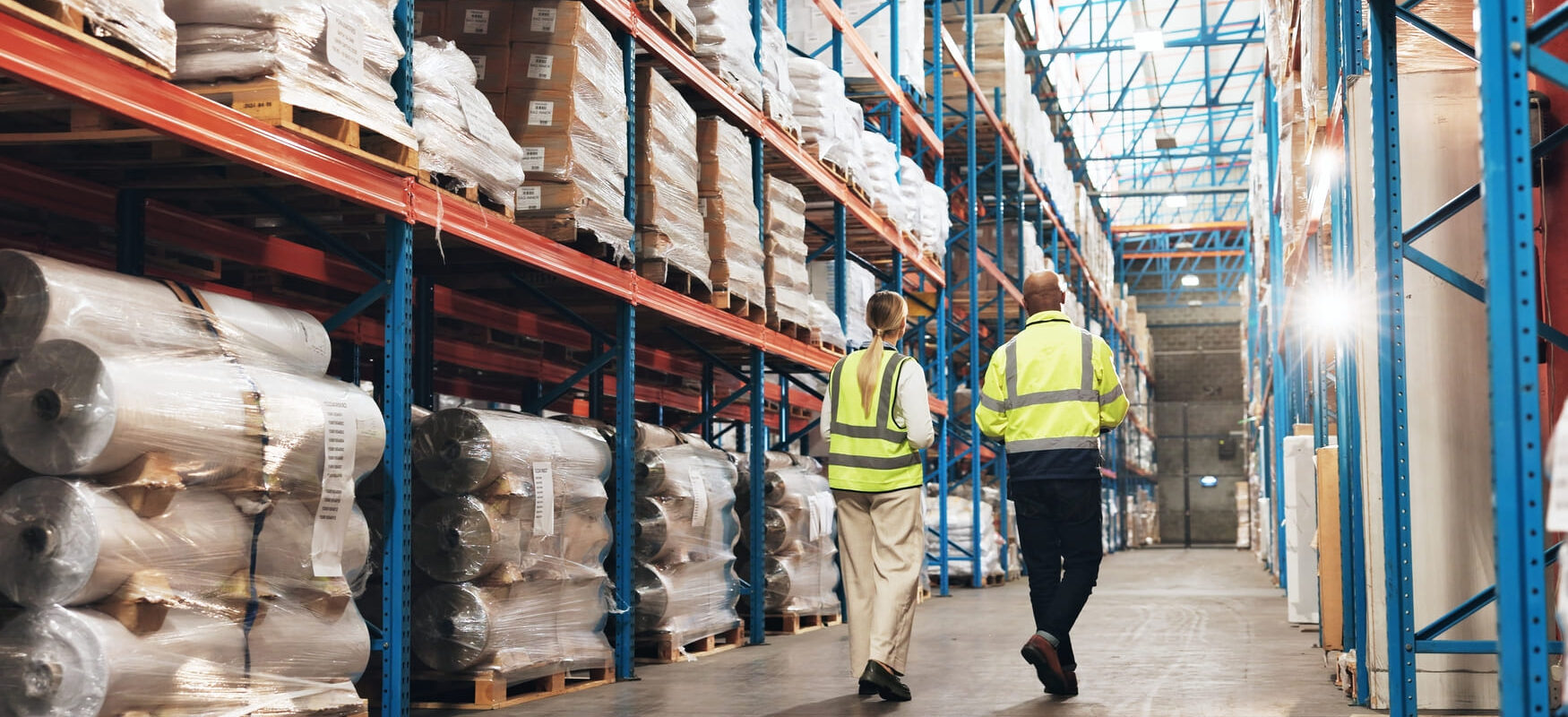Warehouse Logistics for Streamlined Supply Chain Operations

Warehousing and logistics are fundamental to efficient supply chains. Effective warehouse logistics ensure that goods move smoothly from receiving to shipping, reducing delays and lowering costs. By centralizing inventory, warehouses reduce the need for multiple shipments from different locations, saving businesses time and money. In today’s e-commerce-driven market, optimizing warehouse operations also boosts customer satisfaction through faster, more accurate deliveries.
What is Warehouse Logistics?
Warehouse logistics refers to the detailed planning and execution of all activities in a warehouse – from receiving and storing products to picking, packing, and shipping them. In other words, it encompasses the flow of physical goods (inventory in and out of the warehouse) as well as the information that accompanies them. A concise definition is: “Warehouse logistics is the process of organizing, coordinating, managing, and implementing the storage and movement of goods in a warehouse.”. Well-managed warehouse logistics keeps products properly accounted for and ready to ship, which in turn increases operational efficiency.
The Role of Warehouses in Supply Chains
Warehouses are not just storage spaces, they are critical hubs in the supply chain. They securely store products (protecting them from theft, damage, or spoilage) and manage inventory so businesses neither run out of stock nor tie up capital in excess goods. Warehouses also serve as order-fulfillment centers, efficiently picking, packing, and routing products to customers or retail locations. Many logistics providers even offer value-added services (like labeling, kitting, or light assembly) to customize orders before shipment.
Efficient warehouse logistics delivers measurable benefits: when goods flow smoothly, there are fewer errors and delays, which boosts overall productivity and revenue. Properly coordinated warehouse operations result in the “right item … sent at the right time” with “fewer picking errors,” meaning a more efficient warehouse and higher throughput. Key advantages include accurate real-time inventory tracking, reduced customer returns (since orders are filled correctly), and better use of space through automated stock rotation, all of which cut costs and improve customer service.
Key Functions of Warehouses
- Storage: Warehouses offer a secure environment to protect inventory from theft, damage, and environmental conditions, preserving product quality until distribution.
- Inventory Management: Advanced tracking systems ensure optimal stock levels, preventing overstocking or stockouts and allowing accurate demand forecasting.
- Order Fulfillment: Efficient processes for picking, packing, and shipping products help reduce delays and ensure customer satisfaction.
- Value-Added Services: Many warehouses offer services such as packaging, labeling, and assembly, increasing efficiency and customization before goods reach the customer.
Key Elements of Effective Warehouse Logistics
Successful warehouse logistics combines people, processes, and technology. Best practices include:
- Implementing a Warehouse Management System (WMS): Modern WMS software provides real-time visibility into stock levels and order status. It automates many tasks from barcode scanning to automated picking routesforming the foundation of a well-functioning logistics system. With a WMS, managers “know how much inventory you have – and its specific location,” enabling timely replenishment and fewer stockouts.
- Optimizing Warehouse Layout: An efficient physical layout minimizes travel time. Zone- or batch-picking strategies, proper shelving, and use of vertical space all ensure that workers spend less time walking and more time moving products. Periodic layout reassessment can adapt the warehouse to changing product mixes or seasons.
- Leveraging Automation and Technology: Automation tools (e.g. automated storage/retrieval systems, conveyors, or RFID tracking) and digital technologies (barcoding, voice-directed picking) significantly speed up processing and reduce errors. These innovations improve accuracy and enable real-time monitoring of inventory and orders, which is crucial for tight e-commerce timelines.
- Continuous Monitoring & Improvement: Tracking key performance indicators (KPIs) such as order accuracy, throughput, and delivery time is critical. Regularly reviewing metrics highlights bottlenecks and drives ongoing improvements. For instance, if order accuracy falls below a target, the team can immediately address the cause (e.g. by adding barcode scanning or extra training).
- Employee Training: Well-trained staff are essential. Workers must know how to use equipment and follow procedures to prevent mishandling or accidents. Investing in training programs on safety protocols and new technology reduces errors and keeps operations running smoothly.
Overcoming Warehouse Logistics Challenges
While warehousing and logistics bring many benefits, businesses must also overcome challenges such as space constraints, labor shortages, and transportation delays. Addressing these issues proactively can prevent disruptions in operations.
- Space Constraints: Expand or optimize your warehouse space by using vertical storage solutions or partnering with third-party logistics providers.
- Labor Shortages: Invest in employee training and use temporary staff during peak seasons. Offering competitive wages can help attract and retain skilled workers.
- Transportation Delays: Collaborate with transportation providers and leverage real-time tracking to mitigate the impact of delays.
3PL Warehouses and Logistics Services
Third-party logistics (3PL) warehouses play a growing role for e-commerce and small retailers. A 3PL company is “an outside company helping businesses manage a warehouse or group of warehouses” – it typically provides storage and transportation, management, and related services. By outsourcing to a 3PL, businesses can leverage professional warehouses without owning them. This offers flexibility: companies can store inventory wherever it makes the most sense and pay only for the space and services they use. Modern 3PL warehouses often include value-added services (like pick-and-pack, kitting, or returns processing), allowing even small businesses to deliver a full fulfillment experience.
For businesses in the USA, locating a nearby warehouse can further cut costs. In fact, choosing a warehouse close to your customers or suppliers can “reduce transportation costs and lead times”. This is why on-demand warehousing platforms and national 3PL networks are popular: they help you find a “logistics warehouse near me” that optimizes shipping routes. Such proximity means faster delivery to customers and lower last-mile expenses.
Warehouse Logistics Services
Our warehousing and logistics services are designed for small businesses and online retailers. We connect companies with a nationwide network of secure warehouses and fulfillment centers, offering flexible storage, advanced inventory management, and tailored value-added services. Whether you need short-term overflow space or a long-term multi-state solution, we can match you with the right warehouse location. Ready to optimize your warehouse logistics? Contact us today to request a quote and find a warehousing solution near you.
By streamlining your warehouse operations through proven strategies like a WMS, smart layout, automation, and trained staff, you will reduce costs and improve customer satisfaction. In the competitive e-commerce landscape, that efficiency becomes a key advantage.
You may be interested in

What Are Logistics Services?
Logistics services are the backbone of any supply chain. In simple terms, logistics services cover all the activities needed to move goods efficiently from the factory to the end customer. This includes inbound transportation (e.g. shipping raw materials from a supplier), warehousing and storage, order fulfillment (picking and packing), and outbound shipping to deliver products […]

Importance of Warehouse Location: Optimizing Efficiency, Costs & Delivery
Warehouse location refers to the physical placement of a warehouse relative to suppliers, customers and transportation networks. This strategic decision directly affects supply chain performance. A well‑chosen location means goods can flow in and out smoothly: transportation costs drop and delivery times shrink. In practice, placing a warehouse near major highways, ports or dense population […]

Warehouse Automation Trends 2025: AI, Cobots, and Sustainability
Warehouses face new challenges and opportunities in 2025 as technology, consumer demand, and global events transform supply chains. Companies need to boost efficiency and resilience by adopting smarter automation. Experts note that facilities are integrating cutting-edge robotics, AI-driven forecasting, and advanced storage solutions to stay agile. This guide highlights key trends like AI and machine […]
Ready to streamline your warehousing needs?
Request a quote today and discover how OLIMP's tailored solutions can optimize your operations